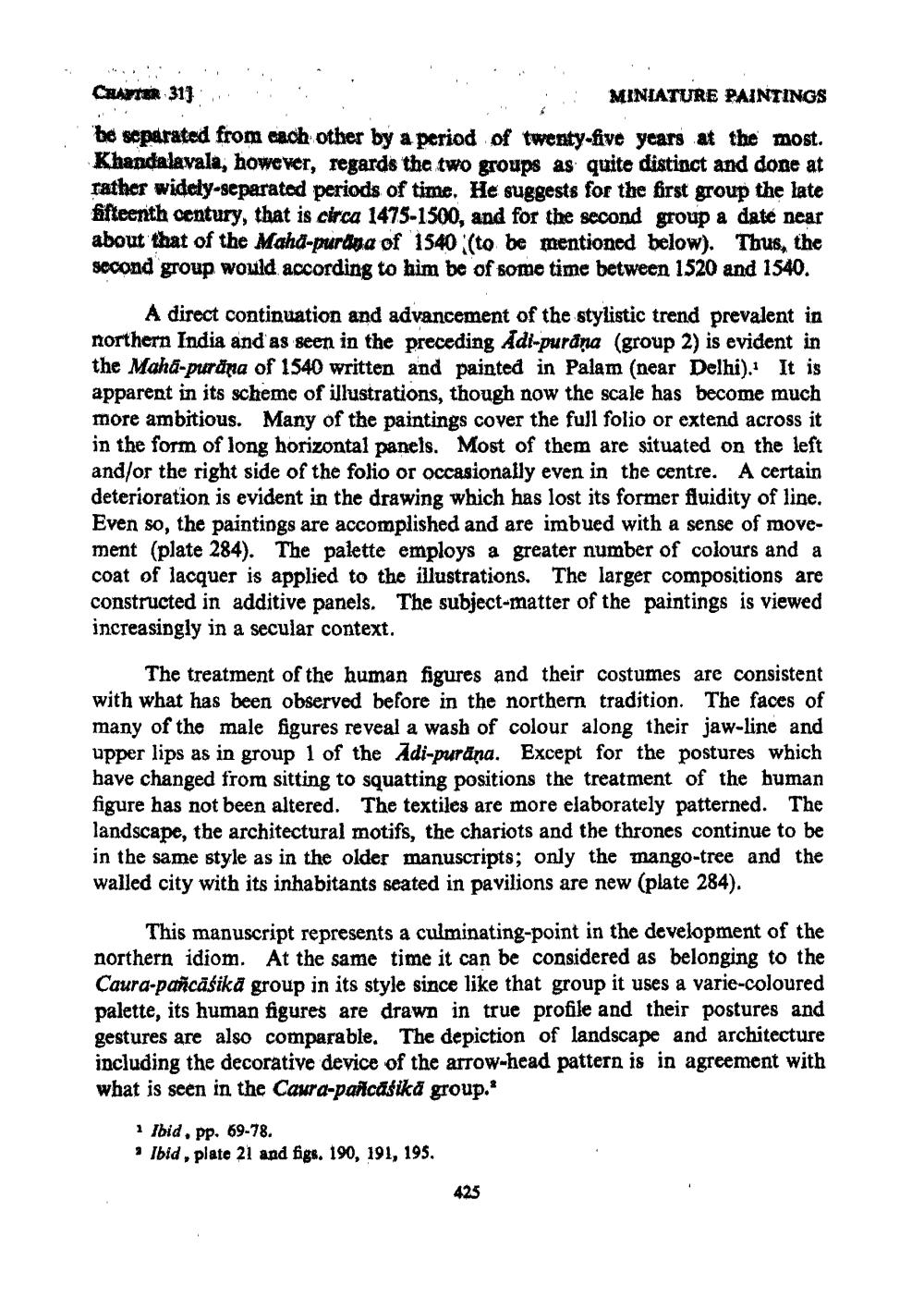________________
CHAPTER 311,,.. .
:: MINIATURE PAINTINGS be separated from cach other by a period of twenty-five years at the most. Khandalavala, however, regards the two groups as quite distinct and done at Tather widely-separated periods of time. He suggests for the first group the late fifteenth century, that is circa 1475-1500, and for the second group a date near about that of the Maha-purdina of 1540 (to be mentioned below). Thus, the
up would according to him be of some time between 1520 and 1540.
A direct continuation and advancement of the stylistic trend prevalent in northern India and as seen in the preceding Adi-purana (group 2) is evident in the Mahā-puräna of 1540 written and painted in Palam (near Delhi). It is apparent in its scheme of illustrations, though now the scale has become much more ambitious. Many of the paintings cover the full folio or extend across it in the form of long horizontal panels. Most of them are situated on the left and/or the right side of the folio or occasionally even in the centre. A certain deterioration is evident in the drawing which has lost its former fluidity of line. Even so, the paintings are accomplished and are imbued with a sense of movement (plate 284). The palette employs a greater number of colours and a coat of lacquer is applied to the illustrations. The larger compositions are constructed in additive panels. The subject-matter of the paintings is viewed increasingly in a secular context.
The treatment of the human figures and their costumes are consistent with what has been observed before in the northern tradition. The faces of many of the male figures reveal a wash of colour along their jaw-line and upper lips as in group 1 of the Adi-puräna. Except for the postures which have changed from sitting to squatting positions the treatment of the human figure has not been altered. The textiles are more elaborately patterned. The landscape, the architectural motifs, the chariots and the thrones continue to be in the same style as in the older manuscripts; only the mango-tree and the walled city with its inhabitants seated in pavilions are new (plate 284).
This manuscript represents a culminating-point in the development of the northern idiom. At the same time it can be considered as belonging to the Caura-pañcāśikā group in its style since like that group it uses a varie-coloured palette, its human figures are drawn in true profile and their postures and gestures are also comparable. The depiction of landscape and architecture including the decorative device of the arrow-head pattern is in agreement with what is seen in the Caura-pancasika group.*
1 Ibid, pp. 69-78. • Ibid, plate 21 and figr. 190, 191, 195.
425




